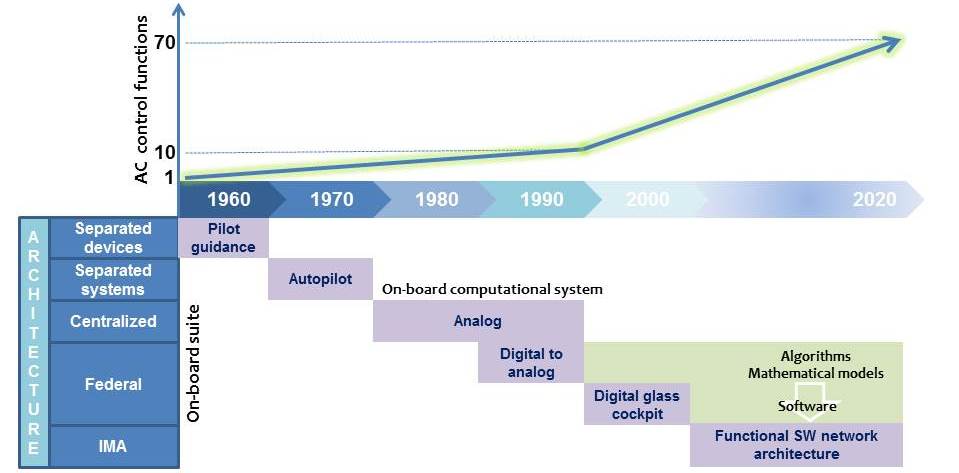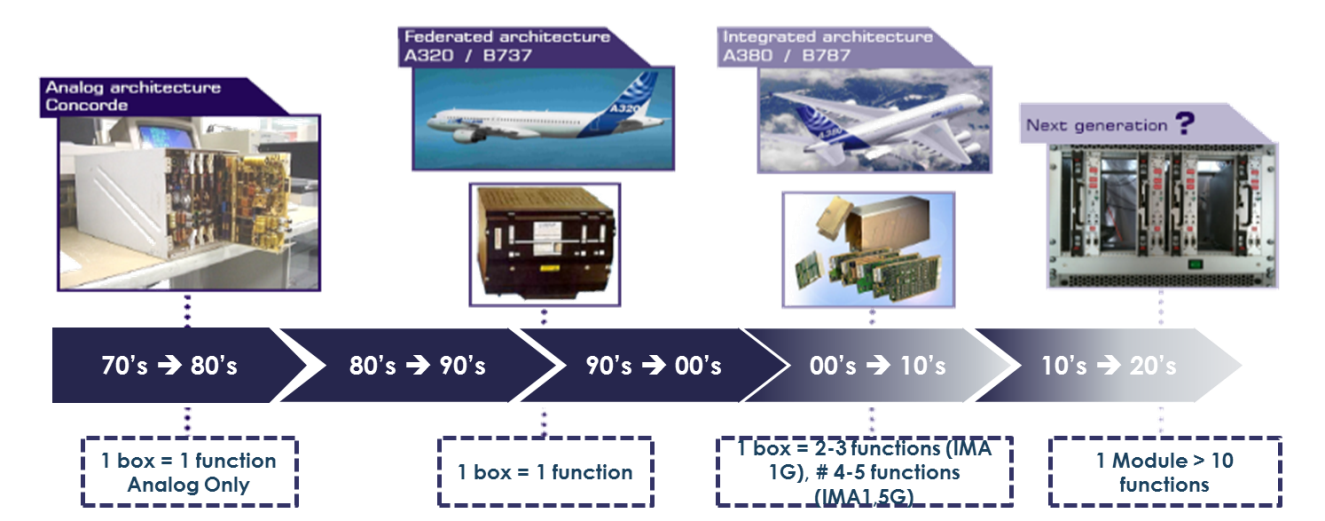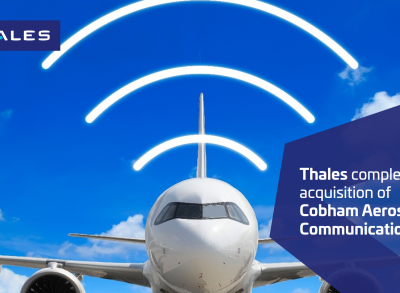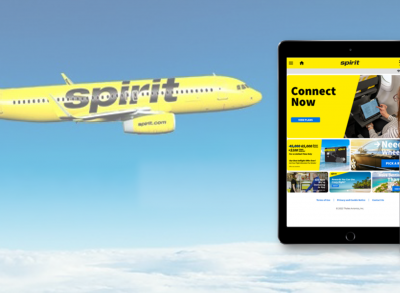Taking integration and connectivity to the next level
Thales was the first supplier to develop an onboard system architecture based on the Integrated Modular Avionics concept. Today we are preparing for the next stage — Extended Modular Avionics — as Marc Gatti, director of avionics research and technology, explains.

Initially developed for the French Rafale fighter, the Integrated Modular Avionics concept was later adopted for the A380, and then further enhanced on major aircraft programmes like A350, A400M, and ATR.
What is Integrated Modular Avionics?
 |
In early avionics architectures, each aircraft function (flight control, flight management, navigation, systems control, utilities, etc.) used dedicated hardware and software. As the number of functions performed by avionics systems increased, these federated architectures grew in size and complexity. As a result, the aircraft of the 1980s carried a whole array of bespoke equipment of different sizes and based on different technologies.
Operators needed to maintain an inventory of spares for each item of equipment and each aircraft type, and equipment modifications, functional upgrades and routine maintenance tasks became increasingly complex and costly. Added to that, the number of delayed flights attributed to faulty avionics became an increasing burden for airlines. This prompted a revolution as the aerospace industry moved away from federated architectures to embrace a new age of Integrated Modular Avionics.
Avionics architectures have evolved in several distinct stages over the years. After the analogue architectures and pilot guidance of the 1970s came the widespread adoption of autopilot functions and onboard computers. Next we had the era of the glass cockpit, when increasing numbers of functions were digitised, followed later by the introduction of software-based functions and network-oriented architectures.
 |
What are the advantages of Integrated Modular Avionics?
The IMA architecture makes it possible to replace the many separate items of equipment with a smaller number of common processing and I/O modules (CPIOM) hosting the different applications. A common operating system provides the applications with the services they require using a concept known as space and time partitioning and covered by ARINC 653 standard.
This architecture is built around dedicated communication buses (covered by ARINC 664 Part 7) that connect the CPIOMs together. These modules can communicate with sensors and actuators through a remote data concentrator and/or a remote electronic unit. For safety reasons, these modules are also interconnected directly to I/O for critical applications.
The applications supported today can be critical cockpit functions such as navigation, flight warning or flight management, and also utilities functions like braking, landing gear control or energy control.
Since the introduction of this architectural breakthrough, a number of further innovations have enhanced the underlying concept and improved efficiency in supporting applications and evolutions. These include incremental certification, more effective characterisation and system modelling tools for early validation of applications.
One key advantage of the IMA approach is that it supports software provided by various function suppliers and integrated either by the aircraft manufacturer (A380, A350, B787) or by the platform provider, as is the case with the ATR 600.
The IMA concept is now well defined, with accepted standards covering operating system features, safety networks and even a specific application segregation scheme.
Thales’s implementation of the concept includes the only incremental certification process that allows independent certification of co-existing functions, which makes a major contribution in minimising the cost of functional updates and evolutions.
What are the next steps?
Thales is working on the Extended Modular Avionics (EMA) concept alongside Airbus, Airbus Helicopters, Dassault Aviation, Sagem and about 30 other partners including a dozen SMEs and research institutes, who are all supporting research into onboard computer platforms as part of a project led by France's Council for Civil Aeronautics Research (CORAC).
This R&D project aims to prepare the groundwork for second-generation IMA and covers all aspects of onboard electronics, including flight control and aircraft functions, operator services and passenger services. It is expected to deliver tangible results for commercial airliners, business jets and helicopters in service in 2020-2030.
The new generation of modular avionics will bring a 50% reduction in size, weight, heat dissipation and costs related to aircraft cabling and will open up a whole range of new opportunities for systems integration on board the aircraft of the future.
The first results of this ground-breaking research and development project will be presented on the CORAC stand at the next Paris Air Show (19-25 June 2017).
Thales is working on the Extended Modular Avionics to prepare the groundwork for second-generation IMA covering all aspects of onboard electronics.
Stay connected with us...
Find us on Twitter @ThalesAerospace, on our official Youtube channel Thales Aerospace and on LinkedIn Thales Aerospace.




